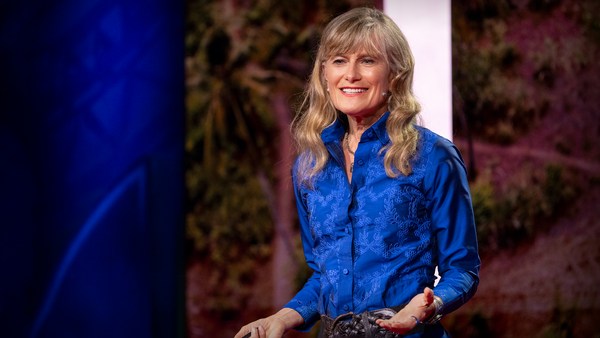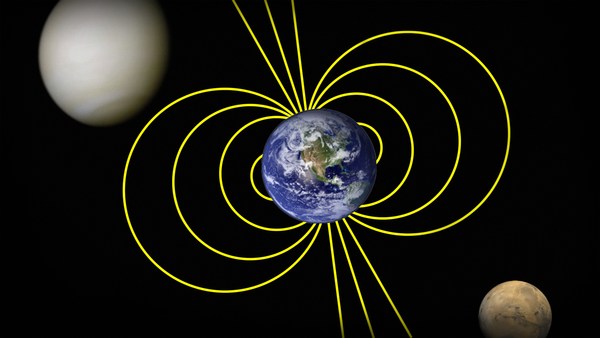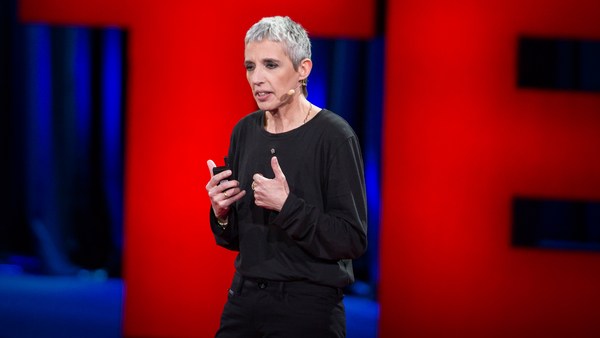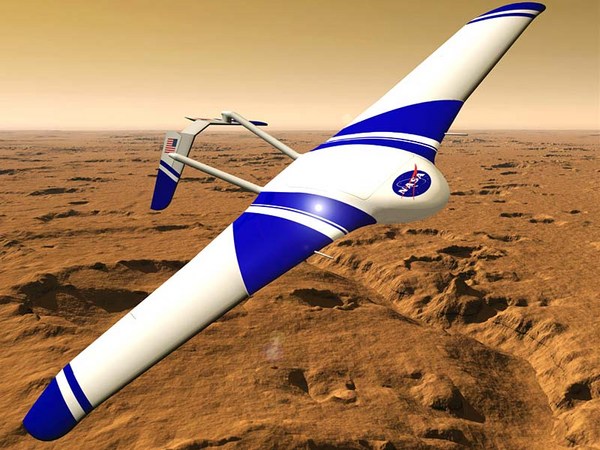This is inner Mongolia, Gobi Desert. My favorite place. It's the most Mars-like on the planet. Barren and empty. Wind blows all year round. Sandstorms happen often. In the winter, temperature is as low as minus 40 degrees. In the summer, it reaches 40 degrees. It's useless.
(Laughter)
But it's my most favorite place. If you look at that small dot, it's me.
(Laughter)
I come to Gobi with a belief. I believe this could be the new space for our civilization. When people see uselessness, barrenness, emptiness, I see abundance. Abundance. If you look at the barren desert, it is filled up with abundant renewable energy. The strong wind and the shining sun. They are infinite and never end.
I found out the important equation between energy and our prosperity. Two thousand years before industrial revolution, our global GDP only grew five times. Why? Because we are only able to use five times energy. Natural energy, agriculture, then transfer to muscle power. Since Industrial Revolution, our global GDP expanded 100 times because we are using 100 times more energy. So abundant fossil fuel energy has been turned and created forces to drive the machines. Created materials like steel, created fertilizer to improve the food production. Today it's even creating tremendous intelligence for humanity.
So how can we unlock such a big potential from desert, to push humanity to the next level of prosperity? Because one hour of solar radiation is able to meet our entire annual demand for energy. It is free, and it is green.
In front of Gobi, we have to solve three challenges. The first one. How can we capture the rough and raw wind energy? Just as steam engine is able to turn coal energy into motion, we end up with wind turbine to capture wind energy to turn into electricity. Most importantly is to really design the wind turbine [to be] able to survive in the extreme wind condition in the desert.
Secondly, how can we [avoid building] a long-distance, or thousands of miles of transmission lines, which is costly and extremely expensive? We end up with the largest off-grid renewable system by integrating wind turbine, solar panel, storage with AI orchestrations.
OK, then the last remaining challenge. How can we utilize such abundant, locally-made electricity? We end up with a solution to build net-zero industrial park, which is going to produce energy-intensive products like batteries and the green hydrogen and ammonia, those green molecules. Why green ammonia? One ton of green ammonia is able to hold 10,000 kilowatt hours of electricity. Most importantly, the green molecule is so important for us to decarbonize our economic system. It’s the most difficult, hard to abate segment. The green hydrogen is going to be used to make green steel, to make net-zero chemicals, to make green aviation and shipping.
So what about today? Just right in the heart of Gobi desert, the first net-zero industrial park has been built. It is totally off grid. 100 percent by renewable energy. It is making the state-of-the-art battery. But most importantly, it is the lowest cost of battery among all envisioned production base. Why? Because it's tremendous --
(Applause)
Free, abundant renewable energy.
And we are also building, in the desert, the largest green-hydrogen project in the world, 1.5 million ton green hydrogen and green ammonia. The first phase, 300,000 tons, as you see, is commissioning now. We are not supposed to build the largest. Our goal is to make the cheapest. To make green hydrogen as cheap as grid. Why [is the] cost so vital? Because, history told us, this 100 times energy growth is the result of cost reductions. In order to unlock these tremendous renewables, we have to make renewable energy much lower than fossil fuels.
There are two forms of energy. One is electron, one is molecule. Today, renewable has already won the battle against electricity. So renewable energy is much lower on making electricity. But there's still another battle. Green molecule is about two or three times [more] expensive than gray molecule from coal and gas. We have to make as cheap as possible, have this cost parity to the grid. So we should redesign the entire energy system and redesign the equipment, then reduce the cost significantly.
So first we designed AI-regulated wind turbine which is able to capture more energy while reducing cost significantly. We are also designing the world's first hybrid energy storage system by combining lithium battery with supercapacitor, [which] is able to support the grid with much less cost. And we are improving the efficiency of electrolyzer by innovating membranes and electrodes significantly.
In order to make the construction work in the desert much easier, much cheaper, we designed modular, prefabricated hydrogen plant. Which has made construction work in the desert as easy as stacking LEGO. And we are also developing AI physical model, starting from predicting weather, wind and solar, to manage grid automatically.
So today, we already are achieving the lowest cost of green hydrogen and green ammonia in the world. But there are still some gaps. I believe within three years, by 2028, we are able to make such cost parity to grid. Why am I so convinced? If you look at the last 20 years, the cost of wind and solar have been reduced 90 percent. For the last five years, the cost of energy storage has been reduced 90 percent. End of the day, green electricity [will] still be the majority cost of green hydrogen. So by combining the significant improvement on the electrolyzer and hydrogen factory, we are for sure to achieve such a cost parity.
By the time we achieve cost parity to grid for molecules, it is going to be a milestone for our humanity because we are going to remove the last bottleneck which is preventing us to unlock tremendous renewable energy. It's the last bottleneck. It is going to open the gate to tremendous new possibilities. Just imagine, as we repeated in the history, within the next 100 years, if we are able to use 100 times more energy, how the world will look like.
We are going to harvest the superintelligence with AI data centers everywhere. We are going to desalinate seawater and turn the desert into green oasis. We are going to remove poverty by producing our food and protein in the basement. We are going, for sure, to reverse climate crisis by taking carbon from the air and turning it into building materials. And we are even able to make interstellar traveling as a daily routine.
(Laughter)
So where's the answer? The answer it just right in the heart of the desert. From Sahara in Africa to Middle East, from Australia to Gobi, there are 100 times [more] energy than what we need. It's infinite, green and free. It's up to our technology.
So, ladies and gentlemen, this net-zero transition is not a costly burden for us. It is indeed the one and only pathway for us, for our humanity, to achieve a new, great prosperity.
Thank you.
(Cheers and applause)





